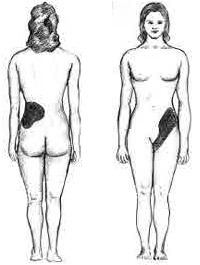Specialty urology ICD-9-CM 788.0 MeSH D056844 | ICD-10 N23 DiseasesDB 26026 | |
 | ||
Renal colic is a type of abdominal pain commonly caused by kidney stones.
Contents
Presentation
Renal colic typically begins in the flank and often radiates to the hypochondrium (the part of the anterior abdominal wall below the costal margins) or the groin. It is typically colicky (comes in waves) due to ureteric peristalsis, but may be constant. It is often described as one of the strongest pain sensations known.
Although this condition can be very painful, kidney stones usually cause no permanent physical damage. The experience is said to be traumatizing due to pain, and the experience of passing blood, blood clots, and pieces of the stone. Depending on the sufferer's situation, nothing more than drinking significant amounts of water may be called for; in other instances, surgery may be needed. Preventive treatment can be instituted to minimize the likelihood of recurrence.
Prognosis and treatment
Most small stones are passed spontaneously and only pain management is required. Above 5 mm the rate of spontaneous stone passage decreases. NSAIDs (non-steroidal anti-inflammatory drugs) such as diclofenac or ibuprofen, and antispasmodics like butylscopolamine are used. Although morphine may be administered to assist with emergency pain management, it is often not recommended as morphine is very addictive and raises ureteral pressure, worsening the condition. Oral narcotic medications are also often used. There is typically no antalgic position for the patient (lying down on the non-aching side and applying a hot bottle or towel to the area affected may help). Larger stones may require surgical intervention for their removal, such as shockwave lithotripsy, ureteroscopy and percutaneous nephrolithotomy. Patients can also be treated with alpha blockers in cases where the stone is located in the ureter.
